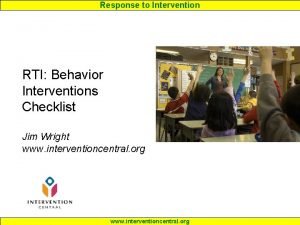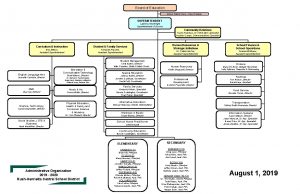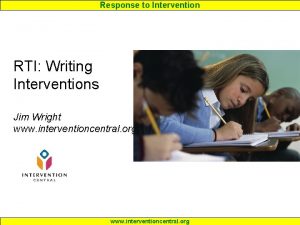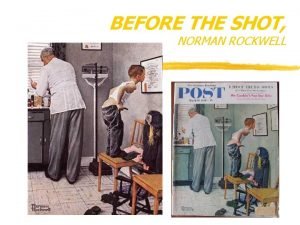TRAUMA TECHNIQUES H Norman Wright Trauma I am


























































































































- Slides: 122

TRAUMA TECHNIQUES H. Norman Wright

Trauma I am frightened inside; the terror of death has attacked me. I am scared and shaking, and terror grips me. I said, “I wish I had wings like a dove. Then I would fly away and rest. I would wander far away and stay in the desert. I would hurry to my place of escape, far away from the wind and storm. ” Psalm 55: 4 -8 New Century Version

Trauma How long must I wrestle with my thoughts and everyday have sorrow in my heart? Psalm 13: 2, NIV

The Common Themes of Trauma � � Trauma produces “hyper-arousal, ” “hyper -alertness” and “hyper-sensitivity. ” Those traumatized often re-experience the trauma It leads to feelings of helplessness Trauma does not make sense

The Common Themes of Trauma � � � It can strike anyone Trauma leaves us feeling unsafe It involves a loss Trauma makes us feel overwhelmed It is often unspeakable Trauma can change or challenge our view of God

What Is Trauma? � � � Trauma is the response to any event that shatters your world. It’s more than a state of crisis. Trauma leaves you feeling unsafe because your place of refuge has been invaded The word trauma comes from a Greek word that means “wound. ” It’s a condition characterized by the phrase “I just can’t seem to get over it. ”

What Is Trauma? � In a physical trauma the word has two meanings. Some part of the body is impacted with such a powerful force that the body’s natural protections such as the skin or bones can’t prevent the injury. And then the body’s normal natural healing capabilities can’t mend the injury without some assistance

What Is Trauma? Emotionally you can be wounded in the same manner. You can be assaulted so much emotionally that your beliefs about yourself and life, your will to grow, your spirit, your dignity, and your sense of security are all damaged. You end up feeling helpless. You can experience this for a degree in a crisis and bounce back. In a trauma you have difficulty bouncing back because you feel depersonalized.

What is Trauma? In a trauma something happens in your brain that affects the way you process information. It affects how you interpret and store the event you experience. The wound of trauma can create a condition called PTSD, or post-traumatic stress disorder. It is not just an emotional response to troubling events; it’s the expression of a persistent deregulation of body and brain chemistry.

What is Trauma? And brain chemistry can be altered for decades. Trauma creates chaos in our brain and causes emotional as well as cognitive concussion. Entering the world of trauma is like looking into a fractured looking glass. The familiar appears disjointed and disturbing; a strange new world unfolds.

What is Trauma? Traumatization is about being trapped in the uncompleted act of escape – Our task is to help them escape and find a safe haven. A traumatized event produces chronic inescapable stress or a permanent imbalance.

What is Trauma? Traumatization is about being trapped in the uncompleted act of escape. We need to help the traumatized escape from the inescapable and find a safe haven. From Ronald Ruden

Trauma 1. Trauma’s a separation from safety. —It’s invasive – invades all areas of our life —It must be dealt with in a unique way for each one 2. It’s unpredictable – You think you’re dropping your child off at daycare or high school or your spouse goes to work or a parent boards a plane.

Trauma 3. Every new trauma activates the old one. It taps into all the old stuff 4. Trauma means that nothing will be the same again. 5. Pain will not last forever – it will diminish.

Trauma 6. Half to two-thirds of victims grow in a positive way. —Develop a greater appreciation for life —Deepen spiritual beliefs —Feel stronger —Build closer relationships

Trauma 7. Those who recover –They see the event as a challenge, not an overwhelming problem. -They’re optimistic. -They connect with people. -They use their spiritual resources.


The Effects of Trauma 1) How trauma impacts our thinking ability � Confusion � Poor Problem Solving � Distractibility � Innattention

The Effects of Trauma � � Difficulty with Simple Arithmetic Hypervigilence Disorientation of Time, Place or Person Heightened or Lowered Alertness

The Effects of Trauma 2) How trauma impacts our behavior � Difficulty Sleeping � Nightmares � Appetite Disturbance � Hypervigilence � Startle Response � Withdrawal from Crowd � Isolation

The Effects of Trauma 3) The emotional reactions created by trauma Guilt Anger Fear Anxiety Shock

The Effects of Trauma 4) Physical � Our immune system takes a hit

Characteristics Of PTSD Symptoms: � Flashbacks � Traumatic Dreams � Memory Disturbance � Persistent Intrusive Recollections � Self Medication – Substance Abuse � Anger Irritability

PTSD Symptoms: � Dazed or Numb Appearance � Panic Attacks � Phobia Formation � Startle Response � Hyper-Vigilance

Reflections on Trauma � � � Exposure to trauma that is repeated is more disabling as is those events that are unpredictable. Violation by another person is always worse that an impersonal trauma. Hidden traumas occur when the trauma has been repressed, when you live in an environment that is trauma blind.

Reflections on Trauma � � In trauma there is two kinds of suffering, one is the trauma caused by the suffering living with the experience and the aftermath. And the second type of suffering is part of the healing process. This is the pain that was too overwhelming to feel before. Traumatic events are like thieves that takes something from us.

Reflections on Trauma � One analogy sometimes used to describe traumatic states is that of a river that has become blocked by debris. When the water is not flowing freely it disturbs the life systems. Parts that are blocked become starved of life, while parts that are flooded become endangered in other ways.

Reflections on Trauma � � The danger for trauma victims is that the “chapter” of their autobiography becomes the only one that counts. It’s difficult to heal unless we change our negative self-talk to a positive realistic statements.

Case Study A woman in her fifties describes the time when she lost her child who was born three months prematurely. The baby lived for only 12 days. She said, “At least with this child, I know why she died. ” At that time, she had one small son. In a few years, she had another son and daughter.

Case Study Years later, her 21 -year-old son committed suicide. He was described as a compliant, happy, easy-going boy. Following his death, her husband came home one day sobbing, which continued for some time. He said he had seen a vision of the Lord holding a child.

Case More recently, her 25 -year-old son, who had already served time in prison, was shot while running from a property where he was trying to steal some items. He was shot at least 12 times by the owner. The case is pending with the DA at this time.

Case Study This struggling mother is just now considering getting some help. She also struggles with what others have told her. Her mother and others have said that she’s under a generational curse. She shared that she has lost who she is because of what her son did.

Case Study Questions to ask: 1. Describe what you would attempt to discover and accomplish in your initial time together. 2. Describe the possible complications of this woman’s grief.

Case Study 3. How would you discover her coping skills? 4. Describe the support system you would recommend for this family.

Case Study 1. Questions I might ask or responses I would make: “You have experienced so many significant losses. How have you handled these? ” “I’m interested in hearing what you’ve been experiencing after the death of your son. ” “If someone could help you now, what would you like them to do or say to you? ”

Case Study This is a time to let her pour out her story of multiple losses and evaluate her coping ability, her support system, her emotional state, where she is in her grief, her questions, her faith, etc. Let her give the details of what others have said about a “generational curse. ” What is her understanding of what this means?

Case Study Are these other individuals—“experts”—in this area or in grief? Probably not. Does this woman believe this? Help her clarify what she believes as well as how to respond to such statements.

Case Study What is her own church and theological background? One of the main concerns is her “loss of personal identity. ” She has “lost who she is because of what her son did. ” Help her amplify and clarify what she means by this. Ask her to identify all of the losses she has incurred because of this tragedy.

Case Study Providing a safe place to share her story and to normalize her feelings is one of our main goals at this time.

Case Study 2. Once again we have a complicated grief situation. a. There is the death of not just one adult son, but two. b. The means by which both died is violent. c. The situation involves the legal authorities. d. Negative support from others. e. Possibly feeling isolated with no support.

Case Study 3. Beginning with her miscarriage, ask what she did to work through the loss. What type of support she had. What resources has she used to handle her losses? What helped her more at that time and what would help her now?

Case Study 4. Organizations such as Compassionate Friends, Survivors of Suicide (SOS) and Grief Share would be beneficial. Identify other family members who would be supportive as well as friends. This mother will probably need assistance in handling the comments of those who talk about a generational curse.

The Human Brain

The Human Brain

The Human Brain



What to Say Facing Your Fears � � When we encounter something that we feel threatens our life, a cascade of hormonal reactions is triggered. Something happens deep inside our brains, too. Our right-brain alarm goes off and drowns out the logical analysis of our left brain. It screams, “Less thinking, more action!”

What to Say Facing Your Fears � It also starts taking pictures like mad—the nonadrenalin heightens the emotional aspects of the situation making it more vivid and notable. Very strong and clear memories are being recorded, probably so that we will remember this event and avoid it in the future.

What to Say Facing Your Fears � What you experienced during the incident was so traumatic that your brain took special note of it, and anytime you approach a person, place, thing or experience that is similar to your original trauma, your right brain whips out its “photo album” and puts on an intense presentation (sights, sounds, smells, tastes) attempting to alert you of the danger that could be waiting there.

What to Say Facing Your Fears � Remember, our left side is more like a “computer, ” our right side is more like a “photo album. ” This side remembers faces and craves rapport and relationship. It’s our emotional side. It is intuitive, spontaneous, experience-oriented, artistic, creative. It stores emotions. We dream on this side of our brain. And very importantly, this is the “alarm” side of our brain.

What to Say Facing Your Fears � Your logical left brain gets muted, and the calming influence of your hippocampus gets pinched off. You’re off on a “reexperiencing” jaunt which, if your right brain would only listen, your left brain could explain why you didn’t need to take that detour today.

What to Say Facing Your Fears � It’s important to invite Jesus Christ into the episodic memories of your trauma, visualizing Him experiencing it with you. Hopefully, you’ll be able to continue engaging in this spiritual exercise, giving Him more and more access to your places of pain and darkness and thereby bringing about some direct healing.

What to Say Facing Your Fears � In this Step we want to encourage you – with Jesus’ help – to take action concerning the things that trigger your reexperiencing episodes. By now, you are probably well-aware of what your triggers are. In the space following, write down any people, places, things or experiences that trigger your re-experiencing episodes, and what the typical effect is (use additional paper if needed).

Excuse Notes � � � My son is under the doctor’s care and should not take P. E. today. Please execute him. Please excuse Mary for being absent. She was sick and I had her shot. Please excuse Roland from P. E. for a few days. Yesterday he fell out of a tree and misplaced his hip.

Excuse Notes � � Dear School: Please exkuse John being absent on Jan. 28, 29, 30, 31, 32 and also 33. Please excuse Jimmy for being. It was his father's fault. Please excuse Ray from school today. He has very loose vowels. Please excuse Tom for being absent yesterday. He had diarrhea and his boots leak.

Excuse Notes � � Please excuse Harriet for missing school yesterday. We forgot to get the Sunday paper off the porch and when we found it Monday, we thought it was Sunday. Please excuse my son’s tardiness. I forgot to wake him and I did not find him til I started making the beds.

Suggested Steps Of Helping Those In Trauma 1. Begin by developing an atmosphere of safety, trust and exploration. Ensure stability for the person before going further. Build the relationship first. Just talking is more important than techniques. “Tell me your story. ” Honor their way of thinking and speaking.

Suggested Steps Of Helping Those In Trauma The more similar you appear to counselees, the greater comfort the client will experience. Connecting is vital. “Commonalities create comfort: differences produce distance” (Schupp, 2003). If counselees are comfortable, they are more likely to discuss the trauma.

Suggested Steps Of Helping Those In Trauma 2. Know the nature of the trauma to this individual: how it is being perceived, how it is felt, and how it is being acted out. There is no effective way to know the impact of the trauma without going inside the individual to find out how the trauma has made its mark.

Suggested Steps Of Helping Those In Trauma � Then adapt your counseling to the person. Don’t expect one intervention to have the same results with two traumatized individuals.

Suggested Steps Of Helping Those In Trauma 2. If counselor uses paraphrasing, the client recognized that the counselor walked into her trauma, heard her pain and understood the situation to the degree possible.

Suggested Steps Of Helping Those In Trauma If there was ever a time to use paraphrasing, it is with a traumatized client who has allowed a clinician to see inside the gaping wounds of the soul. Counselors can reflect with accuracy, care, and concern that the client has been heard on the deepest level.

Suggested Steps Of Helping Those In Trauma 3. Explore trauma memories and associated responses. People are unable to process trauma because they are afraid of their thoughts. Trauma doesn’t fit what happened in reality.

Suggested Steps Of Helping Those In Trauma It goes against our belief or reality. The memories come up of what happened and it makes us scared so we try to push it out of our brain and it comes up even more.

Suggested Steps Of Helping Those In Trauma Charged negative emotions seem to be “stuck” in the right hemisphere, split from the more logical left hemisphere. This accounts for the speechless terror or PTSD. As a result, trauma material remains fragmented, emotionally charged, nonverbal and unstable.

Suggested Steps Of Helping Those In Trauma Now relatively harmless triggers can cause trauma memories or memory fragments to flood one’s awareness. The material is emotionally distressing and doesn’t make sense. It cannot be put away as just one memory in a file of memories. Rather, it seems as if the trauma is the only memory on file.

Suggested Steps Of Helping Those In Trauma Because the memory cannot be expressed verbally, it is often expressed as physical symptoms. Repressed memories also take up space in the brain normally used for short-term memory. When old memories are deleted, short-term memory improves.

Suggested Steps Of Helping Those In Trauma Releasing suppressed memories will improve one’s ability to concentrate and more work will be accomplished in shorter periods of time because the person will think more clearly.

Suggested Steps Of Helping Those In Trauma It’s important to fully explore the trauma memories and observe the unique responses the individual has to the memories. How do you recover them? In helping it’s important to work on one trauma at a time, writing, watching films and praying.

Suggested Steps Of Helping Those In Trauma 4. Decondition harmful affective responses. This critical step is much easier to state than to accomplish. Help them discover new ways of responding to difficult responses—reframe and reinterpret. Reframe symptoms as “signs of coping ” and as “protective and healing mechanisms” and “normal” part of the recovery process.

Suggested Steps Of Helping Those In Trauma The problem with traumatic memories tend to be their intrusion into the present, not an inability to recall them. When they intrude, discussing them and understanding how they may unconsciously influence our behavior can be helpful.

Suggested Steps Of Helping Those In Trauma At the same time, some people heal by fighting their fears and never discussing or explicitly recalling their painful memories at all. For people whose memories don’t negatively affect them in the present, pressuring them to focus on them may actually harm.

Suggested Steps Of Helping Those In Trauma A. Intrusive thoughts are an attempt to make sense of the experience, the brain’s attempt to assimilate the experience. Not just let the experience go, but rather make sense of it; flashbacks/ nightmares are access routes to memory.

Suggested Steps Of Helping Those In Trauma Flashbacks is a way the brain is attempting to heal itself. It’s the mind’s attempt to make sense of what happened. What can be done about intrusive thoughts or flashbacks? B. Denial/numbing are ways that the mind takes a “time out, ” as a way of “dosing” or of “pacing” oneself so you only have to deal with so much stress at one time.

Suggested Steps Of Helping Those In Trauma C. Dissociation at the time of the event was a potentially useful skill. Speak of the “wisdom of the body, ” e. g. , “mind is taking time out from overstimulation”’ “denial is one of nature’s small mercies. ” D. Convey that the “survival skills” that the client once used and were adaptive at the time may no longer be appropriate.

Suggested Steps Of Helping Those In Trauma E. Commend the counselee for being distressed. The counselor might say something like the following: “Given what you have been through, if you didn’t have stressful reactions, weren’t depressed, had a short fuse at times, dwelled on what happened (use counselee’s symptoms), then I would be really concerned.

Suggested Steps Of Helping Those In Trauma F. Indicate that PTSD is definitely responsive to treatment and that healing can be a lifelong process. Convey to the counselee that symptomatology may not go away complete, nor forever.

Suggested Steps Of Helping Those In Trauma G. Indicate that it is possible that symptoms “may get worse before they get better” as we discuss and work through what happened and why, as we begin to refocus on the trauma.

Suggested Steps Of Helping Those In Trauma H. Finally, “although this may be difficult to believe right now, you may even find that there will be some positive benefits to you and your life as a result of the experiences you have had and your willingness now to face and work through what you must work through. ”

Suggested Steps Of Helping Those In Trauma 5. Re-exposure to the trauma is critical, as is how and when the person is reexposed. Research with all trauma survivors indicates a principle that the individual must mentally revisit the traumatic experience again—but with the supportive assistance of someone who can help them through their fear.

Suggested Steps Of Helping Those In Trauma � � � Emotional processing needs to occur. By revisiting the trauma the brain is able to process the experience and make sense of it. They learn that thinking about the trauma is not dangerous.

Suggested Steps Of Helping Those In Trauma � We find a decrease in the strength of a behavioral response that occurs when an initially novel eliciting stimulus is repeatedly presented. Such as revisiting the trauma memory rather than avoiding.

TIR � � The person becomes less afraid of the memory. This is a process by which anxiety comes down on its own. It changes a “hot memory” to a bad memory.

TIR � � How do you do this? One way is TIR (Traumatic Incident Reduction. It can either be by talking or writing). If we don’t want the person to relive the memory so we have them write it down in detail repeatedly in order to drain it.

TIR There are few losses so shattering as the loss of a child can be, especially through something as unpredictable as SIDS. Often marriages do not survive such a loss, as the case below illustrates. This is a slightly edited transcript of an actual session given by Sharie Ann Peacock.

TIR Observing this woman’s progression through various layers of emotion and reaction as she repetitively views this huge loss demonstrates clearly the “magic” of TIR at work. Be sure to notice how details of the incident change and the emotional content progresses through each viewing. Names have been changed and the facilitator’s precise questions removed.

TIR 1 st Time-through the incident (Eyes closed. ) Tom, her husband, picked our 6 month old son Jeremy up out of the crib-it was 5 AM. Jeremy wasn’t breathing, blue. I called 9 -1 -1 (tears). I kept telling Jeremy to wake up. The ambulance got there and they couldn’t do anything. I rode to the hospital in the back of the ambulance.

TIR I sat at the hospital holding him. They kept telling me he wasn’t going to wake up. I did everything the doctors told me to do. I was mad at them! Jeremy was healthy, gaining weight. They finally took him from me. Did an autopsy.

TIR They said SIDS. I said, SIDS? ! Then I thought stupid Tom did coke! (Now looking at me) He killed my baby! [Ed. Note: parental drug use is considered a major risk factor] I couldn’t go back to that apartment. (Head down, eyes closed).

TIR We moved to another apartment. I kept hearing Jeremy. It was a year and a half. Tom kept saying stop crying (looking at me). I think he hated Jeremy. He loved James (his others child) but not Jeremy! I dream about Jeremy.

TIR It was so real. He’s growing. Don’t want to have those dreams any more. At the wake I didn’t want to leave him there either. They put make-up on him. Didn’t look like him. I know hate’s a strong word but I HATE Tom’s family! Jeremy was so beautiful, so healthy. I miss him so much. I feel guilty because I can’t go to his grave – I talk to him all the time though.

TIR 3 rd Time-through the incident � (Eyes closed, slightly less emotion) He brought him in to me like every other morning and said he wasn’t breathing, he was all blue. I was screaming, screaming. I held Jeremy trying to warm him up. He was so cold, he was so cold.

TIR I remember rocking him in the chair. I know everyone was trying to help me, my friends. We stayed at Tom’s mother’s house. Just couldn’t go back to that apartment. They baptized him, he was supposed to be baptized.

TIR Oh, God, I just wanted to pick him up, take him home. Part of me felt like he was still alive. I just couldn’t go. We moved out of the apartment. Things between Tom and I were bad. I hate drugs. All I wanted to do was sleep and not wake up so I could be with Jeremy. Eventually the dreams just stopped. I started getting hold of myself, going back to school. My friends helped me.

TIR 5 th Time-through the incident. (Even less emotion, voice clearer, looking at me) Every morning Tom would wake Jeremy up for his morning feeding and I remember something was wrong, he wasn’t breathing. I remember him running outside for someone to call 911. I just couldn’t wake him up, didn’t want to let him go.

TIR Maybe moving out of the apartment helped, maybe it didn’t. That’s when the dreams stopped. I want to know what causes SIDS. I want to understand. I don’t want to hate Tom, I just want to understand. I said he didn’t love Jeremy but I know he did. When Jeremy was born he was so proud, his whole family was proud. (smiling)

TIR 8 th Time-through the incident: Tom found Jeremy, not breathing. He put Jeremy in my arms, said he was gonna get help, screaming for me to call an ambulance too. They came, did what they could do. The hospital did what they could do.

TIR Let me hold him. They were really nice. I knew he wasn’t coming back. Just wish I could apologize to everybody, especially Tom. Because I know he felt guilty too.

TIR 10 th Time-through the incident: I remember they were giving me Jeremy. The first thing Tom did was put him in my arms. Said he would get help and he did. He stayed right there with me by the rocking chair. Tom’s family as all there for me, telling me, “Anything I needed, anything. ”

TIR A lot of times I do think of him and I talk to him (laughter). I wish him Merry Christmas and happy birthday (smiling). I tell him I’ll see him someday, hopefully. He was so beautiful. (Voice louder, smiling, laughing. Facilitator asked, “How does it seem to you now? ”). I feel like a lot of that anger is gone, the blame is gone. There’s a warm feeling here (hand on chest).

TIR If that makes sense, like he’s here. It used to feel empty. I feel bad sometimes because I can’t remember what he looks like, but I can actually see him, he looks so much like his father. I guess it’s a good thing. He’s right there (hand on chest) – my angel.

TIR They always say put the baby on his side, put the baby on his back, but, there’s a lot of things they don’t know. I just know he’s in a good place. I’ve always known he’s in a good place. I always felt bad I couldn’t go to the grave but that’s just his body. Jeremy is right here, anytime I want to talk to him (smiling).

TIR That’s what I tell my kids. I don’t know if it’s the right thing to do but that’s what I tell them. It’s just something I have to try to accept – not something I can keep going on. But I can talk to Jeremy anywhere I am.

TIR That’s what I believe. A comforting feeling (smiling). I’m just real relaxed, almost like a lot of stuff’s been lifted off my shoulders. I was starting to feel sick to my stomach going through it but it’s gone. His birthday is next month (smiling). He was a perfect little baby. I wish you had met him. OK, I feel good (smiling).

TIR After the viewer has completed one viewing (and one description), the facilitator has him “rewind the videotape” to the beginning and run through it again in the same fashion. The facilitator does not prescribe the degree of detail or content the viewer is to get on each run-through. The viewer will view as much as he is relatively comfortable viewing.

TIR After several run-throughs, most viewers will be able to contact the emotion and uncomfortable details in terms of the strengths of the emotion more thoroughly. Typically, the viewer will reach an emotional peak after a few run-throughs and then, on successive run-throughs, the amount of negative emotion will diminish, until the viewer reaches a point of having no negative emotion about the incident.

TIR Instead, he becomes rather thoughtful and contemplative, and usually comes up with one or more insights concerning the trauma, life, or himself. He displays positive emotion, often smiling or laughing, but at least manifesting calm and serenity. At this point, the viewer ahs reached an “end point” and the facilitator stops the TIR process.

Suggested Steps Of Helping Those In Trauma When they write longhand it’s a tactile memory. It involves better hand/eye coordination and accesses all parts of the brain to help bring it together.

Suggested Steps Of Helping Those In Trauma Battling illness and pain with pen and paper may be unorthodox, but it may also spell relief. “People who write for twenty minutes a day about traumatic events reduce their doctor visits, improve their immune systems and, among arthritis sufferers, use less medication and have greater mobility, ” James W. Pennebaker, Ph. D, professor at the University of Texas at Austin.

Suggested Steps Of Helping Those In Trauma Why the relief? Suppressing negative emotions can weaken the immune system and arouse your fight-or-flight system, churning up blood pressure and heart rate…Writing about conflict or trauma helps organize the experience. The net affect is that people can move beyond the stressful event. How? Breathing – Counting – Radio Dial

Suggested Steps Of Helping Those In Trauma � Restructure the meaning of the trauma by having the person change the ending of the trauma story. As the person is reexposed to traumatic experiences, it is very important to add a component that did not exist the first time around—control.

Suggested Steps Of Helping Those In Trauma Take the control away from the event or the person. You’ve survived until now. How could this be worse? You told your story. How will you be different next month, next year?

Suggested Steps Of Helping Those In Trauma 7. Replace problematic behavioral responses with adaptive behaviors. Teach the person how to make positive changes. “Remember you can write the last chapter of your trauma. It hasn’t been written yet. ”

Suggested Steps Of Helping Those In Trauma 8. Build a new internal self-view. Understanding the meaning of past trauma to the individual, which is Step 2, will help you understand what the post trauma self-image is. “Don’t define yourself permanently as a traumatized person. Teach them when to remember the trauma instead of the traumatic memories being in charge. ”

Suggested Steps Of Helping Those In Trauma In helping others set measurable goals. “How will you know that you are better? ” “Let’s say you made a video tape of you’re better and you bring it in and show it to me. What would you point out to me in the video to indicate that you were better? ”

Suggested Steps Of Helping Those In Trauma 9. Teach the person specific coping strategies. The person must have a new sense of self and feel more confident about internal abilities to be able to win the battle over the present by keeping the past from taking over. You must have some ability to teach, to model, and to reinforce new adaptations or coping skills. Teach the language of healing.

Suggested Steps Of Helping Those In Trauma 10. Turn stressful situations into experiences producing resilience. The final step is similar to rewriting the ending of the trauma story; the individual can be stronger because they have been to hell and made it back in one piece.

Suggested Steps Of Helping Those In Trauma I Thess. 5: 14 “…encourage the timid and faint-hearted. ” Encourage means “to console, comfort and cheer up. ” It refers to the person who “is discouraged and ready to give up. ” Hebrews 10: 25, “Let us encourage one another. ” It means “to keep someone on their feet, who, if left to himself would collapse. ”

Reactivators of Traumatic Stress � � � Anniversary of event Re-occurence of related event Trial – related event News Media Stimuli Related to the event “My ears had heard of you before, but now my eyes have seen you” Job 42: 5, New Century Version

Matthew

 Fonctions techniques
Fonctions techniques Oyez ingraham v wright
Oyez ingraham v wright Electric wright stuff
Electric wright stuff Jim wright rti
Jim wright rti Travis oatmeyer
Travis oatmeyer Graham wright sunnybrook
Graham wright sunnybrook Line imperfections
Line imperfections Wrights test
Wrights test Dr paula wright
Dr paula wright Lovett muscle test
Lovett muscle test Deil wright models of intergovernmental relations
Deil wright models of intergovernmental relations Richard wright sfu
Richard wright sfu Frank lloyd wright apush
Frank lloyd wright apush Matériaux
Matériaux Tk prasad
Tk prasad Tripwire hids
Tripwire hids Kim wright lewisham
Kim wright lewisham Diana browning
Diana browning Morgan wright minnesota
Morgan wright minnesota Holmes wright lantern test
Holmes wright lantern test Chrissie wright
Chrissie wright Motis wright
Motis wright Maria wright edelman
Maria wright edelman Wright
Wright Wright stream breakpoint
Wright stream breakpoint Myeloperoxidase staining
Myeloperoxidase staining Andrew wright teacher
Andrew wright teacher Wright state raider connect
Wright state raider connect Erik olin wright sınıf kuramı
Erik olin wright sınıf kuramı Models of power
Models of power Jira default workflow diagram
Jira default workflow diagram Frank lloyd wright bridge
Frank lloyd wright bridge Patricia reilly wright
Patricia reilly wright Diana browning wright
Diana browning wright Jim wright rti
Jim wright rti Louis t wright
Louis t wright Jean ann wright
Jean ann wright Legge di wright
Legge di wright Who was the wright brothers sister
Who was the wright brothers sister Diana browning
Diana browning Wright's stain procedure
Wright's stain procedure Mark r. wright
Mark r. wright Dagan wright
Dagan wright Magpie poem meaning
Magpie poem meaning C wright mills conflict theory
C wright mills conflict theory Josh wright haematology
Josh wright haematology Coombs'lu wright testi
Coombs'lu wright testi Vincenzo quadrini
Vincenzo quadrini Fisher model
Fisher model Example of latent function
Example of latent function Judith hess wright
Judith hess wright Stoic behavior in dentistry
Stoic behavior in dentistry Criterios de moll y wright
Criterios de moll y wright Stufen der partizipation
Stufen der partizipation Magic box poem
Magic box poem Ridge relationship classification
Ridge relationship classification Jim wright intervention central
Jim wright intervention central Diana browning wright
Diana browning wright Oração de joe wright
Oração de joe wright Robert s wright
Robert s wright Dr. jim wright
Dr. jim wright Wright brothers engine
Wright brothers engine Daine wright
Daine wright Wright stuff science olympiad
Wright stuff science olympiad Nordic capital
Nordic capital Where did the propellers sit on the wright flyer?
Where did the propellers sit on the wright flyer? Generic network virtualization encapsulation
Generic network virtualization encapsulation Lawrence bo wright
Lawrence bo wright Plato
Plato Sistema arquitravat
Sistema arquitravat Two rights dont make a wrong
Two rights dont make a wrong Rti writing interventions
Rti writing interventions Why is mrs. peters a dynamic character in trifles?
Why is mrs. peters a dynamic character in trifles? Nancy nager
Nancy nager Minnesota handwriting assessment
Minnesota handwriting assessment Wright county soccer club
Wright county soccer club Wright turn glider
Wright turn glider Fisher house louis kahn
Fisher house louis kahn Norman malcolm ontological argument
Norman malcolm ontological argument Jane mixer case
Jane mixer case Norman maccaig memorial
Norman maccaig memorial Signing naturally unit 9.10 minidialogue 3 answers
Signing naturally unit 9.10 minidialogue 3 answers Norman loeb
Norman loeb Visiting hour analysis
Visiting hour analysis Eksperimen norman triplett
Eksperimen norman triplett Josephson junction
Josephson junction Dr norman ruiz castaneda
Dr norman ruiz castaneda Don norman constraints
Don norman constraints Norman rockwell before the shot
Norman rockwell before the shot Norman warne
Norman warne Mr dudley little britain
Mr dudley little britain Niveles de pensamiento de norman webb
Niveles de pensamiento de norman webb Norman vicent
Norman vicent D norman paving
D norman paving Donald norman la caffettiera del masochista
Donald norman la caffettiera del masochista William cohen norman
William cohen norman El reno path
El reno path Norman triplett sports psychology
Norman triplett sports psychology Norman salmon
Norman salmon Aunt julia annotations
Aunt julia annotations Leonard euler
Leonard euler Dr norman pieniazek
Dr norman pieniazek Norman ackerman
Norman ackerman Don norman's design principles
Don norman's design principles Norman model in hci
Norman model in hci Leonard cohen biografia
Leonard cohen biografia Norman sharpe
Norman sharpe Norman webb taxonomy
Norman webb taxonomy Norman 7 principles
Norman 7 principles Tim obrien quotes
Tim obrien quotes Water polo number positions
Water polo number positions Stees v leonard
Stees v leonard Norman'ın körfez yaklaşımı
Norman'ın körfez yaklaşımı Norman craig oberlin
Norman craig oberlin Norman pwell
Norman pwell Norman iscove
Norman iscove Assisi norman maccaig annotated
Assisi norman maccaig annotated Design rationale in hci
Design rationale in hci It is the translations between user and system?
It is the translations between user and system? Norman koren
Norman koren Norman alexander garcia
Norman alexander garcia Norman conquest
Norman conquest A department store decides to use secret shoppers
A department store decides to use secret shoppers


















































































































































